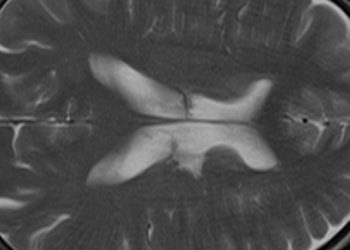Changes in opioid or nonopioid pain treatments not attributable to state opioid prescribing laws
1. No changes in opioid or nonopioid pain prescribing patterns were attributable to state laws.
2. State laws were associated with no significant change in the supply of opioid prescriptions.
Evidence Rating Level: 2 (Good)
Study Rundown: Over the past 2 decades, clinical guidelines for the management of acute and chronic noncancer pain have emphasized the use of nonopioid alternatives. States have also passed multiple types of laws designed to reduce opioid prescribing, including cap laws that limit the dose or duration of opioid prescriptions, pill mill laws that prevent rogue clinics from issuing opioids without medical indication, and mandatory prescription drug monitoring programs that require prescribers to check the program before prescribing an opioid. However, there is a gap in knowledge as to whether state opioid prescribing laws have influenced opioid prescribing patterns. This study found that there were no substantial changes in the pattern of opioid prescribing or nonopioid pain treatment attributable to state laws among commercially insured patients. This study was limited by factors such as not being generalizable to non-commercially insured populations and being imprecise for some estimates, as well as the inability to assess clinical appropriateness of pain treatments due to using claims data. Nevertheless, these study’s findings are significant, as they demonstrate that any changes in opioid prescription patterns are not attributable to state opioid prescribing laws among commercially insured US adults.
Click to read the study in AIM
Relevant Reading: Change in Per Capita Opioid Prescriptions Filled at Retail Pharmacies, 2008–2009 to 2017–2018
In-Depth [retrospective cohort study]: This study examined 7,694,514 commercially insured adults in the United States from 2008 to 2019, in 13 states that implemented a single law of interest in a 4-year period. Patients who were 18 years or older and continuously enrolled in insurance were eligible for the study. Patients who were diagnosed with cancer, excluding skin cancer, at any point during the study period were excluded from the study. The primary outcome measured was the proportion of patients receiving an opioid prescription or guideline-concordant nonopioid pain treatment per month. Outcomes in the primary analysis were assessed via an augmented synthetic control approach that weights the control states so that the magnitude of and time trends in outcomes and covariates during the prelaw period align as closely as possible in the treatment and control states. Based on the analysis, laws were associated with small-in-magnitude and non-statistically significant changes in outcomes. For adults overall and those with chronic noncancer pain, the state laws were associated with a change of less than 1% in the proportion of patients receiving an opioid prescription and a change of less than 2% in the proportion of patients receiving any guideline-concordant nonopioid treatment. The laws examined were also associated with a change of less than 1 in the days’ supply of opioid prescriptions. Overall, this study demonstrated that there are not any substantial changes in opioid prescription patterns or nonopioid pain treatment prescription patterns that could be attributable to state laws for commercially insured patients. This suggests that declining trends in opioid prescribing are probably driven by other factors such as changing clinical guidelines or professional norms.
Image: PD
©2022 2 Minute Medicine, Inc. All rights reserved. No works may be reproduced without expressed written consent from 2 Minute Medicine, Inc. Inquire about licensing here. No article should be construed as medical advice and is not intended as such by the authors or by 2 Minute Medicine, Inc.

![2MM: AI Roundup- AI Cancer Test, Smarter Hospitals, Faster Drug Discovery, and Mental Health Tech [May 2nd, 2025]](https://www.2minutemedicine.com/wp-content/uploads/2025/05/Untitled-design-350x250.png)





